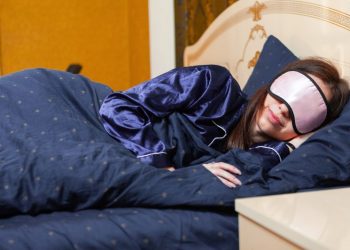Women’s Health Kuel Category Expert: Lisa King
If you are a woman in midlife, it is not your imagination that you may be feeling like you have to go to the bathroom more often! Symptoms of overactive bladder include that “Got to Go” feeling with or without bladder leakage.
It also includes urinating frequently; eight or more times per day or two or more times per night. Frequent urination coupled with the sudden need to urinate can sometimes lead to urinary accidents as well.
If any of this sounds familiar to you know that you are not alone. 40 % of all women experience overactive bladder symptoms and studies show that nearly three fourths of women will experience some type of incontinence.
Diet Matters:
“sugar can compound overactive bladder symptoms”
Dietary changes are one of the first steps in reducing overactive bladder symptoms. Watching intake of caffeine, alcohol, spicy foods, and acidic foods can be helpful in reducing symptoms. However; there is something that may be in your favorite foods or drinks that can exacerbate overactive bladder and that is SUGAR! Sugar, the sneaky ingredient that can cause that “Got to Go” feeling.
Sugary foods and drinks can increase blood sugar levels and your kidneys work harder to be able to process the extra glucose. If the kidneys cannot process the extra glucose, it is then dumped into the urine. Your body then works to dilute the sugar by increasing thirst which causes you to drink more water. Drinking more water then can lead to urinating more frequently. There is sugar in so many foods and drinks and many do not realize that sugar can compound overactive bladder symptoms.
Reducing sugar in the diet is not only important in preventing disease states such as diabetes, heart disease, obesity, Alzheimer’s and certain cancers when in midlife; but it is important for bladder health too!
4 Steps To Reduce Sugar In Your Diet:
- Read Labels! The first step in reducing sugar in the diet is to start reading labels. The American Heart Association recommendation for women is 25g of sugar per day. This is a generous number and a great starting point. Even so-called health foods such as protein bars and yogurt can have nearly half of the daily allowance of sugar. Reading labels will help bring awareness of daily sugar consumption.
- Stay Hydrated! Sipping water slowly throughout the day will help with absorbing water on a cellular level. When drinking water all at once, is more likely to cause more frequent urination. Staying hydrated will increase energy levels and decrease sugar cravings for energy.
- Eat Nature’s Candy! Nature’s candies are colorful fruits and vegetables. Eating nutrient dense foods will improve energy levels thus decreasing the need for a sugar boost.
- Rest! Take time to rest and sleep when needed. It may sound obvious but taking the time to rest instead of reaching for a sugary drink or sweet in the afternoon is often much needed and appreciated. Your body will thank you for it!
“There are many treatment options including managing symptoms through dietary changes”
Overactive Bladder – A Common Issue:
Overactive bladder can be more common in midlife, but know that you are not alone! Speak to a health care practitioner if any of this resonates with you. There are many treatment options including managing symptoms through dietary changes which also includes reducing sugar in the diet. Reducing sugar, the sneaky ingredient that can cause that “Got to Go” feeling, is an important part of any wellness plan! Taking time to make changes in your daily routine will allow sugar cravings to subside and can help with that “Got to Go” feeling too!























